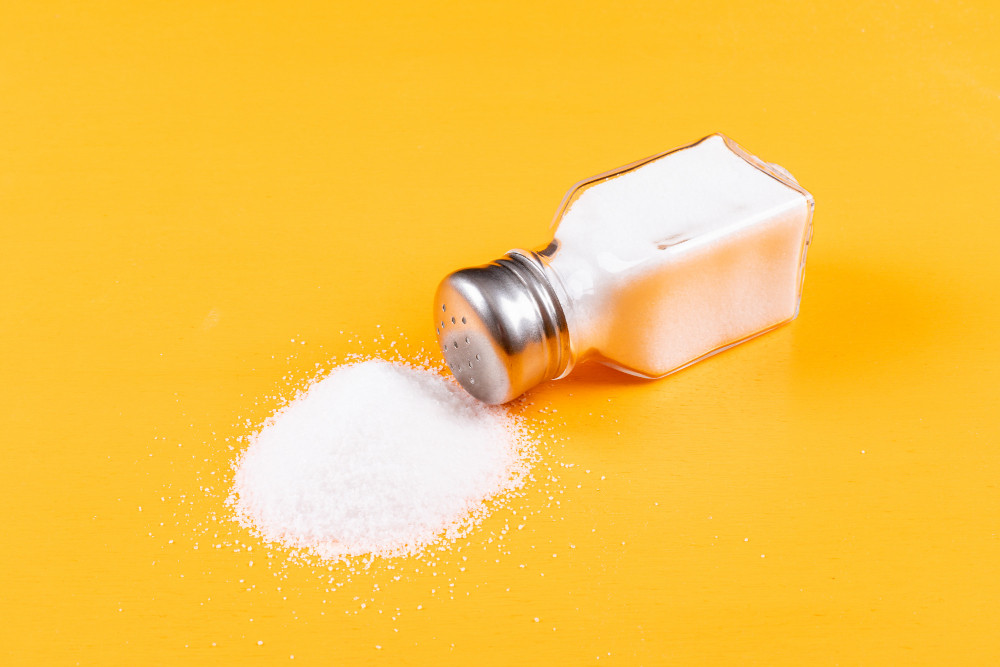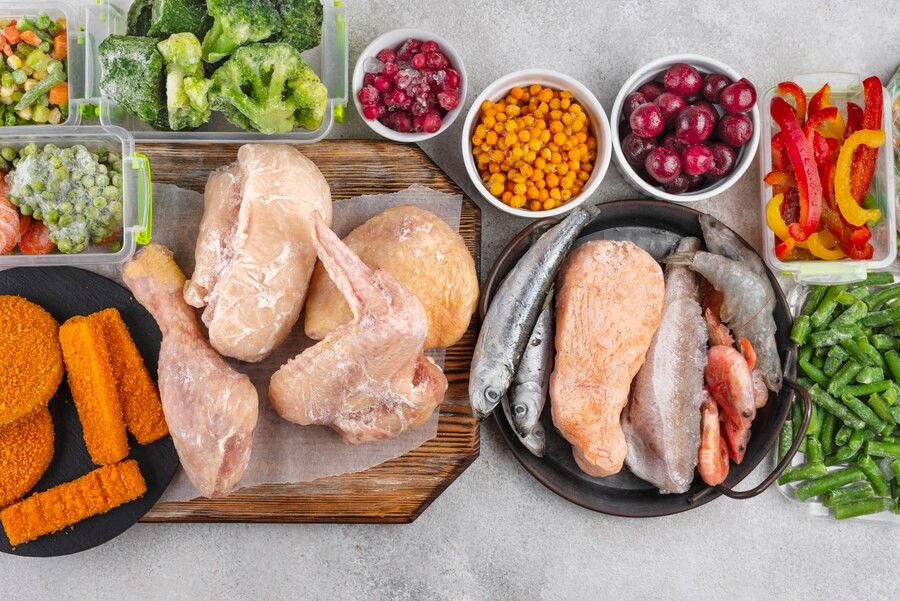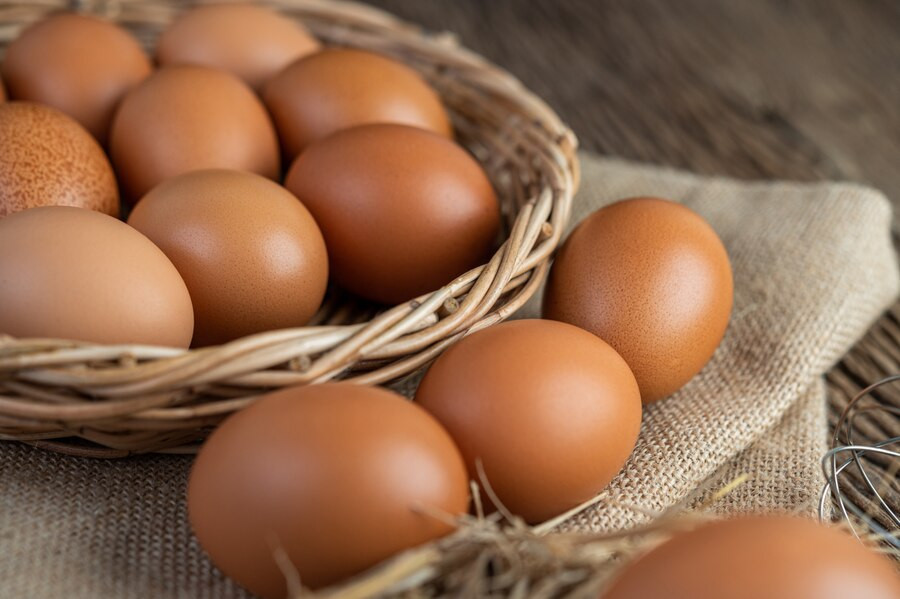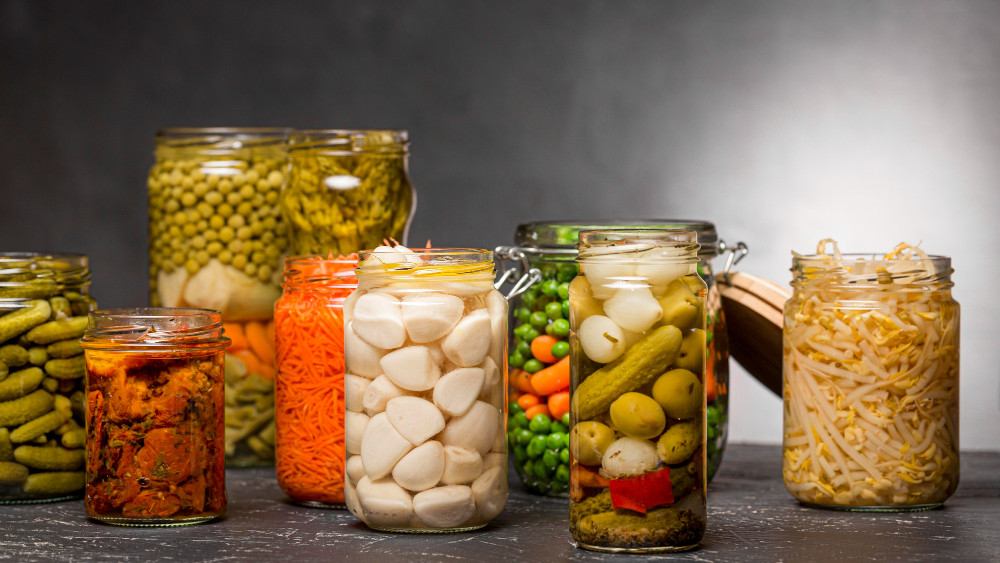Garam merupakan salah satu bahan alami yang banyak digunakan untuk mengawetkan makanan. Penggunaan garam dalam proses pengawetan makanan memungkinkan makanan bertahan lebih lama sebelum membusuk. Bagaimana cara kerja garam dalam pengawetan makanan?
Cara Kerja Garam dalam Proses Pengawetan Makanan
Teknik mengawetkan makanan telah lama digunakan sejak ribuan tahun silam. Tujuan utama mengawetkan makanan adalah untuk mencegah makanan cepat busuk hingga bisa dikonsumsi. Salah satu bahan alami yang digunakan untuk mengawetkan makanan adalah garam. Beberapa makanan yang banyak diawetkan dengan garam antara lain dendeng, acar, dan ikan.
Sebagai pengawet, garam bekerja dengan dua cara:
Garam membantu mengeluarkan air dari makanan
Garam membantu mengeluarkan air dari makanan sehingga membuat makanan menjadi lebih kering. Bakteri pada makanan juga membutuhkan air. Ketika garam mengeluarkan air dari makanan, maka bakteri akan kekurangan air sehingga memperlambat proses pembusukan makanan.
Garam membunuh mikroba
Pengawetan makanan dengan garam menggunakan garam konsentrasi tinggi. Kandungan garam yang tinggi dapat mematikan sebagian besar mikroba karena pengaruh tekanan air.
Dalam sel, air berpindah antar sel untuk membuat konsentrasi garam dan zat terlarut lainnya seiembang di kedua sisi sel. Namun dengan tingginya konsentrasi garam, banyak mikroba yang mati karena perbedaan tekanan antara bagian luar dan dalam sel.
Tingginya kandungan garam juga dapat bersifat racun bagi proses di dalam mikroba yang memengaruhi DNA dan enzim. Selain garam, kandungan gula yang tinggi juga memiliki efek yang sama pada mikroba sehingga sering digunakan sebagai pengawet seperti pada selai dan jeli.
Baca Juga: Mengenal Alergi Sulfit: Alergi pada Pengawet Bahan Makanan
Apakah Semakin Tinggi Kandungan Garam Semakin Baik untuk Mengawetkan Makanan?
Meskipun garam yang digunakan merupakan konsentrasi tinggi, namun tidak berarti semakin tinggi kandungan garam maka proses pengawetan makanan menjadi lebih baik.
Pada beberapa makanan, penambahan kadar garam terlalu tinggi akan merusak rasa, tekstur dan struktur makanan yang diawetkan. Selain itu, menambahkan banyak garam ke dalam makanan untuk proses pengawetan juga dapat menyebabkan efek samping lainnya seperti tekanan darah tinggi.
Pemilihan konsentrasi garam perlu disesuaikan dengan jenis makanan yang akan diawetkan. Pasalnya, bakteri cenderung tumbuh berbeda tergantung dari seberapa asin lingkungannya.
Umumnya garam yang digunakan adalah konsentrasi tinggi 10%, sementara yang lain menggunakan garam dengan konsentrasi lebih rendah. Selain garam, beberapa makanan juga diawetkan dengan bahan lain seperti gula atau ragi untuk membantu pertumbuhan bakteri.
Baca Juga: Benarkah MSG Berbahaya? Kenali Risiko dan Dosis Amannya
Cara Menyimpan Makanan agar Tahan Lama
Selain menggunakan pengawet, cara menyimpan makanan juga dapat memengaruhi masa simpan makanan. Kesalahan dalam menyimpan makanan dapat menyebabkan makanan cepat basi dan meningkatkan risiko keracunan makanan.
Beberapa panduan dalam menyimpan makanan yang bisa Anda praktikkan di rumah antara lain:
- Jaga kebersihan makanan, alat masak, dan tangan saat menyiapkan makanan. Selalu cuci tangan dengan bersih sebelum dan sesudah menyentuh makanan, bersihkan alat masak seperti pisau, talenan, piring, dan mangkok lainnya. Sebaiknya hindari penggunaan talenan yang sama untuk daging dan sayuran atau buah.
- Jika membeli bahan makanan atau bumbu olahan, pastikan jauh dari tanggal kedaluwarsa. Namun jika bahan makanan menunjukkan perubahan aroma, warna, dan tekstur sebaiknya buang produk tersebut.
- Hindari susu yang tidak dipasteurisasi untuk mengurangi risiko infeksi bakteri seperti listeria.
- Masak daging dengan matang. Jika ingin memanaskan makanan sebaiknya panaskan secara menyeluruh.
- Kenali gejala keracunan makanan. Jika menunjukkan tanda keracunan makanan setelah mengonsumsi suatu makanan sebaiknya periksakan ke dokter.
Penggunaan garam sebagai pengawet telah lama digunakan sejak ribuan tahun silam untuk mengawetkan hasil panen agar bisa dikonsumsi lebih lama. Jika memiliki pertanyaan seputar kesehatan atau nutrisi, Anda bisa berkonsultasi ke dokter atau manfaatkan fitur konsultasi pada aplikasi Ai Care.
Mau tahu informasi seputar nutrisi, makanan dan tips diet lainnya? Cek di sini, ya!
- dr Nadia Opmalina
FDA. Food Safety at Home. Available from: https://www.fda.gov/consumers/womens-health-topics/food-safety-home
Koo, I. (2023). Using Salt as a Food Preservative. Available from: https://www.verywellhealth.com/eat-it-with-a-grain-of-salt-1958878
Martin, T. (2022). What Are Natural Preservatives?. Available from: https://www.webmd.com/diet/what-are-natural-preservatives
Cooper, J. (2024). The Truth About Processed Food. Available from: https://www.webmd.com/diet/ss/slideshow-processed-food












